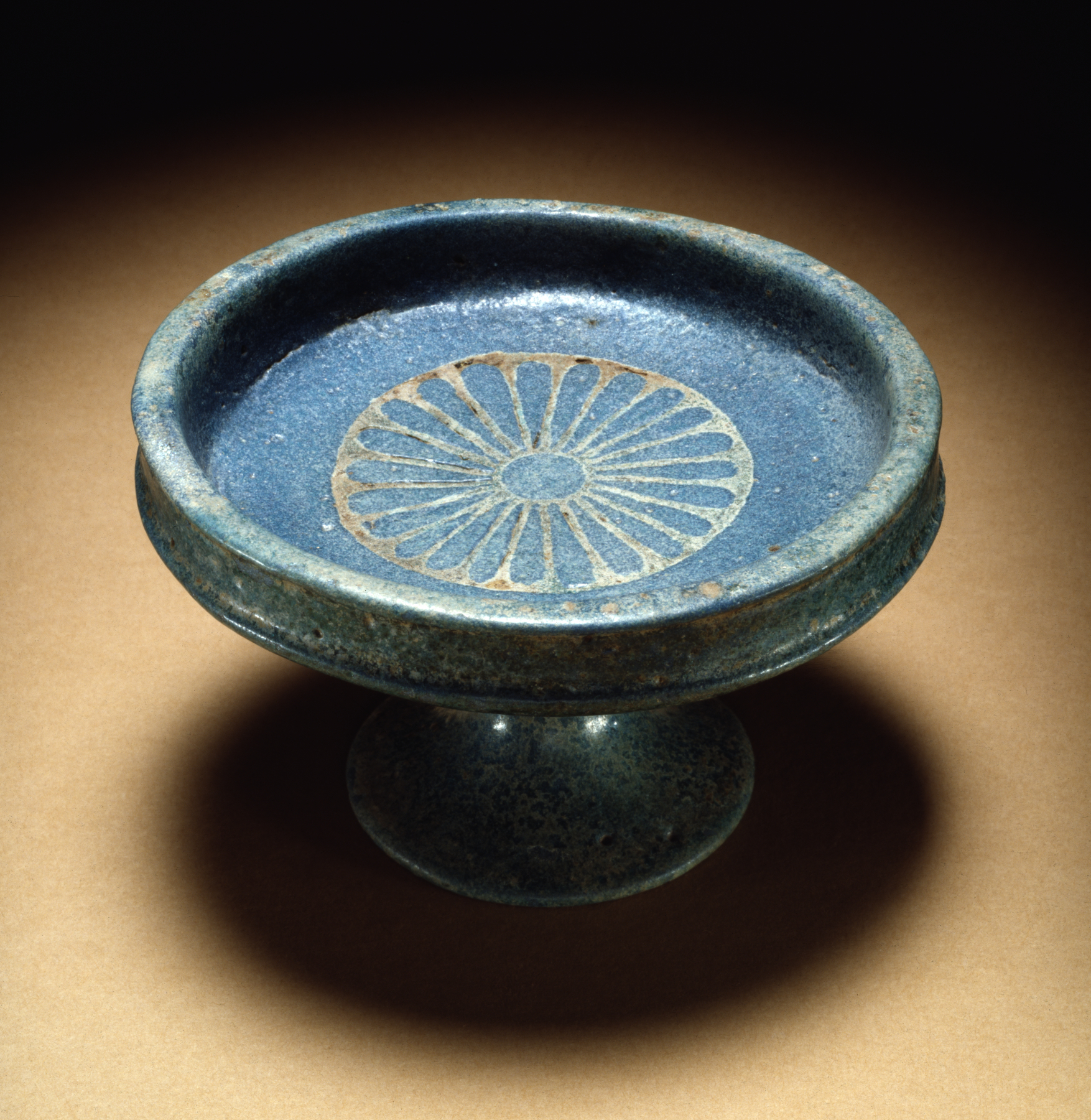Saucer and Stand
ca. 1400-1325 BCE (New Kingdom)
Egyptian faience with glaze
(Ancient Egypt and Nubia )
(Ancient Egypt and Nubia )
A daisy decorates the interior of a tazza, or footed dish. A point on the bottom of the saucer fits into a corresponding depression in the stand, securing the two together. Patterns cut into the still moist composition were filled with a different colored paste to create the inlay.
Provenance
Provenance (from the French provenir, 'to come from/forth') is the chronology of the ownership, custody, or location of a historical object. Learn more about provenance at the Walters.
Provenance (from the French provenir, 'to come from/forth') is the chronology of the ownership, custody, or location of a historical object. Learn more about provenance at the Walters.
E. A. Abemayor, Cairo [date and mode of acquisition unknown]; Henry Walters, Baltimore, 1930; Walters Art Museum, 1931, by bequest.
Exhibitions
| 1998-1999 | Gifts of the Nile: Ancient Egypian Faience. The Cleveland Museum of Art, Cleveland; Museum of Art, Rhode Island School of Design, Providence; Kimbell Art Museum, Fort Worth. |
| 1992-1993 | Egypt's Dazzling Sun: Amenhotep III and His World. The Cleveland Museum of Art, Cleveland; Kimbell Art Museum, Fort Worth; Galeries nationales du Grand Palais, Paris. |
| 1982-1983 | Egypt's Golden Age: The Art of Living in the New Kingdom (1558-1085 B.C.). Museum of Fine Arts, Boston, Boston; Houston Museum of Natural Science, Houston; The Walters Art Gallery, Baltimore. |
Conservation
| Date | Description | Narrative |
|---|---|---|
| 1/31/1997 | Examination | survey |
Measurements
1 7/8 x 1 9/16 in. (4.7 x 4 cm) (h. x diam.)
Credit Line
Acquired by Henry Walters, 1930
Location in Museum
Accession Number
In libraries, galleries, museums, and archives, an accession number is a unique identifier assigned to each object in the collection.
In libraries, galleries, museums, and archives, an accession number is a unique identifier assigned to each object in the collection.
48.1608


